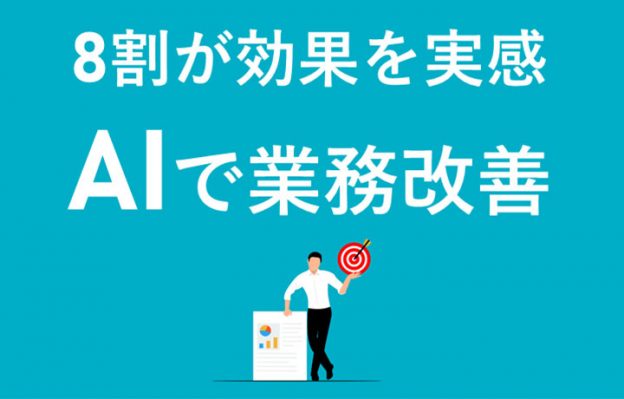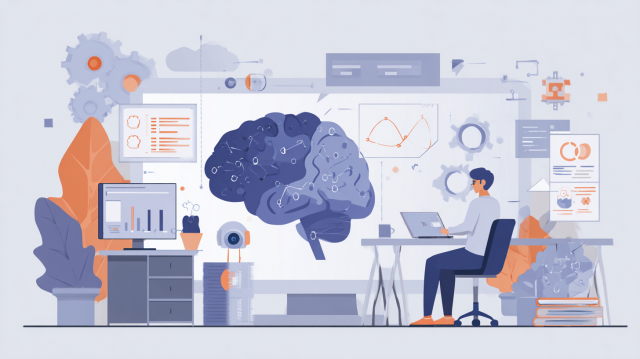
We will consider the efficiency of operations utilizing AI.
"I don't know where to apply AI in my business."
"The benefits of implementation are not clear to me."
"I don't know what kind of applications there are."
We will introduce the strengths of AI from the perspective of business improvement and efficiency, along with case studies of its application. We will also verify the satisfaction levels of companies that have actually implemented AI based on survey results.
- Table of Contents
-
- 1. The Relationship Between AI and Machine Learning
- 1-1. What is the relationship between AI, machine learning, training data, and annotation?
- 2. Benefits of Implementing AI in Business
- 2-1. Customize AI Depending on the Method of Annotation
- 2-2. Work Processing Capability Exceeding Human Ability
- 2-3. Eliminate Job Personalization
- 2-4. Freeing Workers from Simple Labor
- 3. Examples of AI Utilization in Business Settings
- 3-1. Use Case 1: Chatbots for Customer Service and Help Desk
- 3-2. Use Case 2: Automation of Contract Review and Document Processing
- 3-3. Case Study 3: Medical Support
- 3-4. Use Case 4: Anomaly Detection and Equipment Maintenance in Construction and Manufacturing Sites
- 3-5. The possibilities are endless depending on the combination
- 4. What is the status of AI implementation in Japan?
- 4-1. AI Adoption Rate of Japanese Companies
- 4-2. Purpose of Implementing AI
- 4-3. Actual Business Improvement Effects
- 80% of the companies that implemented it felt the effects
- 5. The Emergence of Generative AI
- 5-1. Advantages and Disadvantages of Generative AI
- 6. Tasks that can be streamlined by generative AI
- 6-1. Inquiry Response
- 6-2. Data Analysis
- 6-3. Content Generation
- 6-4. Translation Services
- 6-5. Recruitment
- 6-6. Inventory Management
- 6-7. Analysis of Customer Information
- 6-8. Financial Report Preparation
- 7. Use Cases of Generative AI in Business Settings
- 7-1. Business Use Case of Generative AI 1: Text Generation Using ChatGPT in Government
- 7-2. Business Use Case of Generative AI 2: Generating Illustrations in the Style of 'Irasutoya'
- 7-3. Business Use Case of Generative AI 3: A New Information Retrieval System Using Generative AI
- 8. Steps for Improving Business Efficiency with Generative AI
- 8-1. Current Analysis of Business Processes
- 8-2. Evaluation of the Applicability of Generative AI
- 8-3. Selection of Tools
- 8-4. Implementation of Test Operations
- 8-5. Establishing Internal Training and Support Systems
- 8-6. Continuous Improvement of Business Processes
- 9. For inquiries about AI implementation, contact Human Science
- 9-1. Achieved 48 million teacher data creations
- 9-2. Resource Management Without Using Crowdsourcing
- 9-3. Utilizing the latest data annotation tools
- 9-4. Complete Security Room within the Company
1. The Relationship Between AI and Machine Learning

1-1. What is the relationship between AI, machine learning, training data, and annotation?
First, let's organize how AI works. To operate AI, it is necessary for humans to provide data for the AI to learn from. By repeatedly supplying data that includes information about problems and answers, the AI develops the ability to discern patterns and characteristics from that data. This training is called machine learning. Below, we will organize commonly used terms.
AI: Refers to artificial intelligence itself.
Machine Learning: Training for AI to operate.
Training Data: Data used for machine learning.
Annotation: The process of creating training data.
The process of AI development is illustrated in this way.
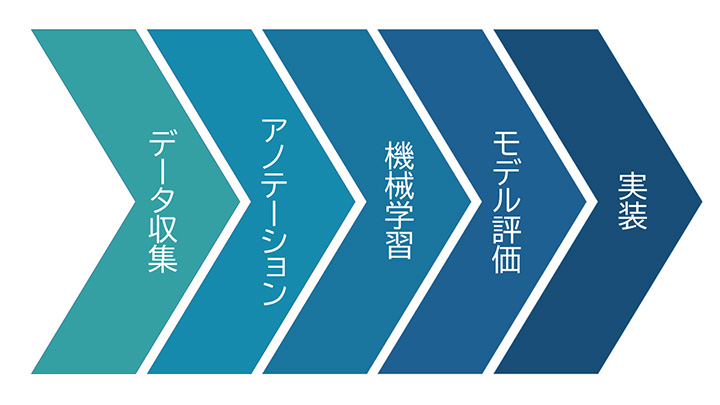
For articles about annotation, click here
>> What is Annotation? Explanation from its meaning to its relationship with AI and Machine Learning.
For information about machine learning and training data, click here
>> What is Training Data? Explanation from its relationship with AI, Machine Learning, and Annotation to how to create it.
2. Benefits of Implementing AI in Business

2-1. Customize AI Depending on the Method of Annotation
Annotation is the process of preparing training data for AI to perform machine learning. Annotation needs to be done manually by humans. In other words, it means that you can train AI in any way you like, depending on the method. It is also possible to formulate a policy that aligns with your company's business challenges and future prospects, and customize AI for each project. Compared to developing human resources, it can be said to be a lighter and more focused approach to the project's objectives.
2-2. Work Processing Capability Exceeding Human Ability
The overwhelming productivity is a significant feature of AI. Since AI does not experience changes in physical condition or have fixed working hours, it can process large amounts of data without rest, using clear and decisive criteria. Especially in tasks such as identification and prediction, it can perform processing faster and more accurately than humans.
2-3. Eliminate Job Personalization
If specific skills and knowledge are tied to certain personnel, introducing AI can improve the situation. Once a system is established, it becomes possible to advance projects without being affected by personnel changes or vacations.
2-4. Freeing Workers from Simple Labor
By having AI take on simple and time-consuming tasks, humans can allocate time to creative work such as planning and learning in new fields. From the perspective of work style reform, there are many expectations for the utilization of AI.
3. Examples of AI Utilization in Business Settings

We will pick up and introduce examples of AI utilization that lead to improved business efficiency.
3-1. Use Case 1: Chatbots for Customer Service and Help Desk
The introduction of AI chatbots is already common. AI responds to customer inquiries on behalf of operators. This is seen not only in external customer support but also in the use within the company's intranet.
JAL has succeeded in reducing costs by utilizing chatbots for internal information provision.
>> "Simple Use for Simple Issues" | Key Points Behind JAL's Successful Chatbot Implementation
3-2. Use Case 2: Automation of Contract Review and Document Processing
The introduction of AI enables the automation of a series of tasks such as document review, data extraction, input, aggregation, analysis, and output. It is utilized for reviewing contract contents and processing forms such as invoices.
In contract review, AI checks the contents of contracts and identifies risks. It is possible to perform a certain level of review without arranging external experts such as lawyers.
>>Comparing the Advantages of Contract Review by AI and Lawyers|Practicality of AI Review and Smart Usage
3-3. Case Study 3: Medical Support
AI is being utilized to improve the efficiency of diagnostic operations. The AI extracts areas that appear to be lesions or tumors from images such as X-rays, ultrasounds, and MRIs. By making preliminary assessments, it alleviates the workload of doctors and helps prevent oversight.
In the medical image recognition AI announced by Google, the AI recognizes lesions and makes diagnoses based on images of skin taken by users with their smartphones.
>>Challenges to the Practical Application of Google's Developed "Medical" Image Recognition AI
3-4. Use Case 4: Anomaly Detection and Equipment Maintenance in Construction and Manufacturing Sites
AI is utilized to detect near-misses such as intrusions into hazardous areas by workers and contact with heavy machinery. In predictive maintenance applications, AI can sense abnormalities from the operational sounds of factory equipment, allowing it to determine equipment degradation or failure. In the maintenance of roads and buildings, AI detects signs of aging, such as cracks and paint peeling, from images, thereby reducing the workload of regular inspections performed by humans.
This is a case of reviewing the working environment at a production site.
>>Labor Environment Monitoring System Using AI Video Analysis
3-5. The possibilities are endless depending on the combination
In AI development, it is common for multiple technologies and methods to be combined. The Google Translate smartphone app can recognize the text of an object when the camera is pointed at it and translate it sequentially. This is an example of a combination of AI OCR, natural language processing, and AI translation technology. Depending on the combination of technologies, the applications of AI can expand infinitely.
4. What is the status of AI implementation in Japan?
We will examine the data to see if we can truly expect business improvements from AI.
4-1. AI Adoption Rate of Japanese Companies
This is a survey targeting companies in Japan, Germany, and the United States, showing the percentage of companies that responded that they are utilizing AI technology in their operations.
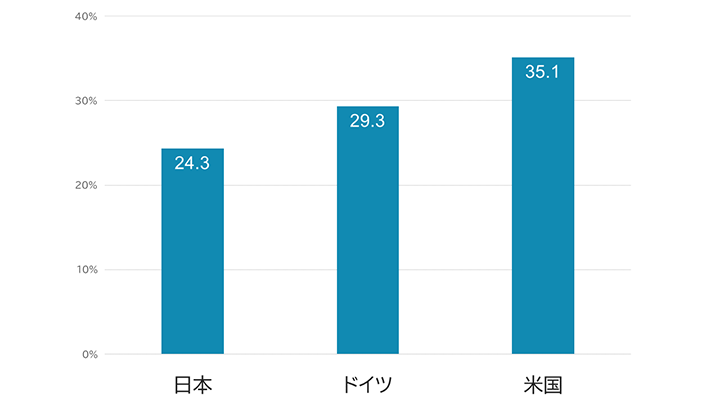
Source: Image created by the author, based on a 2021 research study by the Ministry of Internal Affairs and Communications on the economic impact of digital transformation.
Japan had the lowest figure among the three countries at 24.3%.
4-2. Purpose of Implementing AI
This is the result of a survey on the purposes of AI usage targeted at Japanese companies.
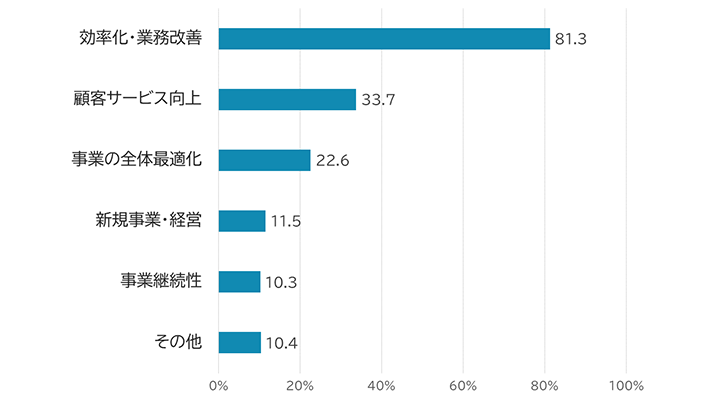
Source: Created by the author based on the 2021 White Paper on Information and Communications by the Ministry of Internal Affairs and Communications
The answers of efficiency and business improvement are significantly ahead of others.
4-3. Actual Business Improvement Effects
This is the result of a survey on the perceived effects of AI implementation among Japanese companies.
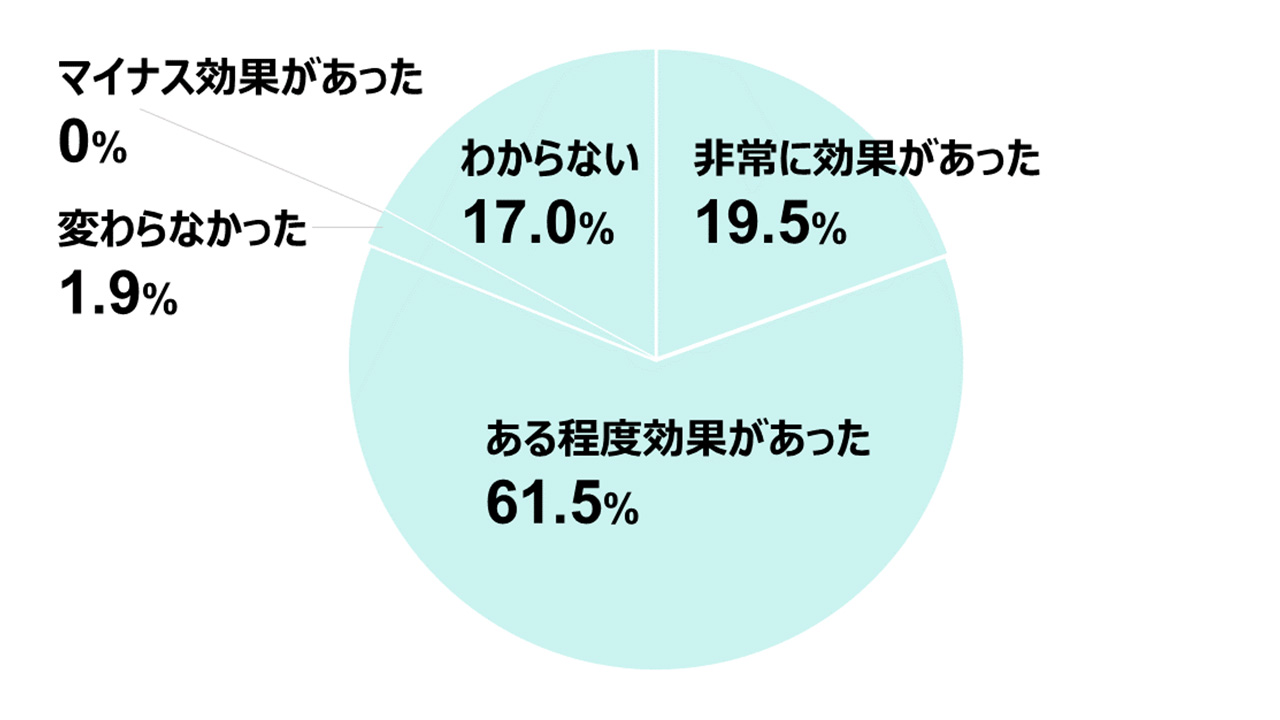
Source: Created by the author based on the 2021 White Paper on Information and Communications by the Ministry of Internal Affairs and Communications
More than 80% of companies responded that it was "very effective" or "somewhat effective." No companies reported any negative effects.
80% of the companies that implemented it felt the effects
20% of Japanese companies have adopted AI, and among them, 80% have experienced the benefits of business improvement. The efficiency and business enhancement brought by AI implementation are quite realistic and worth pursuing. The adoption rate of AI in Japanese companies is still low. Let's advance our business by adopting it ahead of competitors.
5. The Emergence of Generative AI
Not only the conventional identification AI mentioned so far, but also generative AI such as ChatGPT and Midjourney have emerged, rapidly advancing their utilization in various fields. By simply inputting a prompt, users can generate text or images that reflect their intentions, allowing tasks that previously required significant time and effort to be completed instantly. While this convenience exists, there are also concerns about the potential for generative AI to take away jobs and the credibility of generated data, such as deepfakes, indicating that there are many challenges to its utilization. Here, we will introduce examples of companies that are working on the utilization of generative AI, taking into account its merits and demerits.
5-1. Advantages and Disadvantages of Generative AI
Generative AI can create text and images based on prompts. As a result, even those without specialized knowledge or skills can easily obtain the desired programming code or illustrations, eliminating the need for the manpower and time previously required for these tasks, leading to a significant increase in productivity.
On the other hand, there are challenges. The generated data may appear natural at first glance, but upon closer inspection, there are many unnatural aspects. Additionally, there is a possibility that inaccurate information from the original data used for generation may lead to the creation of questionable facts. There is also a risk that the prompts input during generation may leak externally.
6. Tasks that can be streamlined by generative AI
Generative AI is a powerful tool for streamlining various tasks. It particularly demonstrates its true value in operations that require repetitive tasks or large-scale data processing. Below, we introduce specific tasks that can be optimized using generative AI.
6-1. Inquiry Response
Generative AI can be utilized as an automated response system in customer support, allowing for quick responses to customer inquiries. This reduces the burden on staff and improves customer satisfaction.
6-2. Data Analysis
It is possible to quickly analyze large amounts of data and extract various information. This contributes to improving the speed and accuracy of decision-making in business.
6-3. Content Generation
In the fields of marketing and advertising, it is possible to automatically generate content such as blog articles and social media posts. This saves time for creative teams and allows for more efficient allocation of resources.
6-4. Translation Services
AI-powered automatic translation tools can perform real-time translations between multiple languages. This enables smooth operations even in global business.
6-5. Recruitment
It is possible to automate parts of the hiring process, such as resume screening and interview scheduling. This reduces the burden on the HR department and enables the rapid acquisition of talented personnel.
6-6. Inventory Management
Generative AI can forecast demand by analyzing inventory data in real-time. By utilizing generative AI, we can prevent excess or insufficient inventory and achieve efficient inventory management.
6-7. Analysis of Customer Information
By analyzing customer purchase history and behavioral data, we can suggest the most suitable products and services for each individual customer. This can enhance the customer experience and is expected to increase sales.
6-8. Financial Report Preparation
By automating the creation of standard financial reports, we improve the operational efficiency of the accounting department. By utilizing this effectively, it becomes possible to allocate more time to strategic financial analysis.
7. Use Cases of Generative AI in Business Settings
7-1. Business Use Case of Generative AI 1: Text Generation Using ChatGPT in Government
There is an active movement to introduce and utilize ChatGPT in local governments. In Kanagawa Prefecture, it is planned to use generative AI for business purposes starting from September 2023. Trial usage has already been conducted, and guidelines for utilization have also been established. According to the guidelines, the aim is to utilize it for generating ideas for planning and proposals, as well as creating greeting messages and posts for social media.
>>Utilizing Generative AI (ChatGPT) in Business Operations7-2. Business Use Case of Generative AI 2: Generating Illustrations in the Style of 'Irasutoya'
AI Picasso Co., Ltd., which provides the AI material site "AIsozai.com", has partnered with the free illustration site "Irasutoya" to offer a service that utilizes "AI Irasutoya". By leveraging AI Picasso Co., Ltd.'s image generation technology and developing a dedicated AI model trained on the characters of "Irasutoya", the quality of the generated materials has significantly improved, allowing users to generate and utilize illustrations that meet their specific needs.
>>Official Release of "AI Irasutoya" Generating Illustrations in the Style of Irasutoya! Unlimited Generation and Commercial Use Now Possible!7-3. Business Use Case of Generative AI 3: A New Information Retrieval System Using Generative AI
There are also cases where generative AI is utilized to obtain useful information from various data dispersed within the company. Coca-Cola uses generative AI to efficiently extract information from internal data files and display a summary of about 100 words as search results. Similarly, Asahi Beer is experimentally introducing an information retrieval system to aggregate and organize technical information dispersed within the company.
>>U.S. Coca-Cola: "We want to see what happens" The true intention behind 'democratizing' trademark assets with generative AI >>Asahi Beer introduces an internal information retrieval system utilizing generative AI, applying it to product development and operational efficiency8. Steps for Improving Business Efficiency with Generative AI
Below are general steps to utilize generative AI to streamline operations.
8-1. Current Analysis of Business Processes
First, we will analyze the current business processes in detail. We will identify which tasks consume the most time and which parts can be automated. At this stage, it is important to visualize the business flow and conduct interviews with employees to identify specific challenges.
8-2. Evaluation of the Applicability of Generative AI
Next, we will examine which tasks can be applied to generative AI. Generative AI can be applied to various tasks such as data analysis, report creation, and customer support. When assessing applicability, it is necessary to understand the characteristics and limitations of generative AI and compare them with the characteristics of the tasks.
8-3. Tool Selection
The selection of generative AI tools affects the results of business efficiency. There are many generative AI tools available in the market, but it is important to choose one that fits the needs of the business. When selecting, a comprehensive assessment of the tool's features, ease of use, cost, and support system is conducted.
8-4. Implementation of Test Operations
We will conduct a small-scale test using the selected tools. At this stage, we will apply generative AI to specific tasks and review the results. Based on the test results, we will determine whether to utilize the generative AI tools.
8-5. Establishing In-House Training and Support Systems
When introducing generative AI, it is essential to establish a training and support system for employees. We will conduct lectures and training to deepen understanding of how to use AI tools and the changes in business processes. Additionally, we will set up a support system after implementation to ensure a quick response in case issues arise.
8-6. Continuous Improvement of Business Processes
The implementation of generative AI is not a one-time effort; it demonstrates its true value through continuous improvement. We regularly review business processes and implement measures to maximize the effectiveness of generative AI. By introducing new AI technologies and optimizing workflows, we achieve further operational efficiency.
9. For inquiries about AI implementation, contact Human Science
9-1. Achieved 48 million teacher data creations
"I want to implement AI, but I don't know where to start."
"I don't know what to request even if I want to outsource."
In such cases, please consult Human Science. Human Science participates in AI development projects across various industries, including natural language processing, medical support, automotive, IT, manufacturing, and construction. Through direct transactions with many companies, including GAFAM, we have provided over 48 million high-quality training data. We handle a variety of annotation projects, from small-scale projects to long-term large-scale projects with 150 annotators, regardless of the industry.
9-2. Resource Management Without Using Crowdsourcing
At Human Science, we do not use crowdsourcing. Instead, projects are handled by personnel who are contracted with us directly. Based on a solid understanding of each member's practical experience and their evaluations from previous projects, we form teams that can deliver maximum performance.
9-3. Utilizing the latest data annotation tools
One of the annotation tools introduced by Human Science is AnnoFab, which lets you receive progress checks and customer feedback on the cloud, even while the project is ongoing. By ensuring that work data cannot be saved on local machines, we demonstrate appropriate security measures.
9-4. Complete Security Room within the Company
Human Science has a secure room that meets ISMS standards within our Shinjuku office, so we can handle even highly confidential projects on-site. The promise of of confidentiality is extremely important to us for any of our projects. We provide continuous security training to our staff, and we handle all information and data with the utmost care, even on remote projects.

 Text Annotation
Text Annotation Audio Annotation
Audio Annotation Image & Video Annotation
Image & Video Annotation Generative AI, LLM, RAG Data Structuring
Generative AI, LLM, RAG Data Structuring
 AI Model Development
AI Model Development In-House Support
In-House Support For the medical industry
For the medical industry For the automotive industry
For the automotive industry For the IT industry
For the IT industry